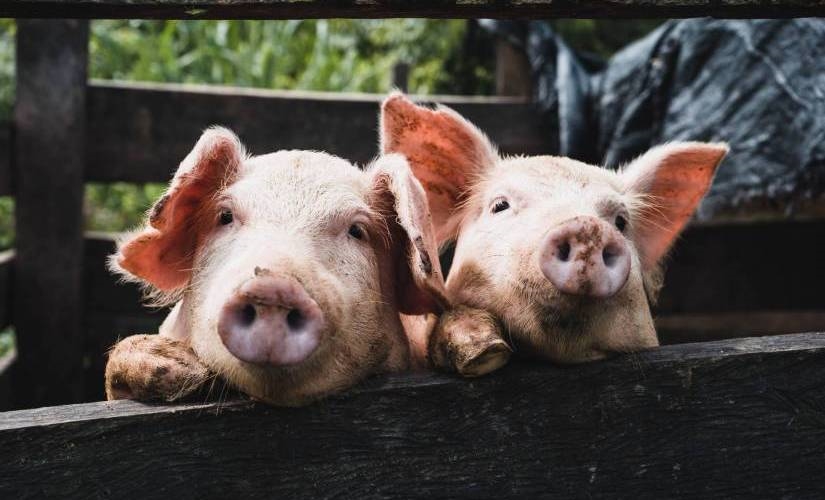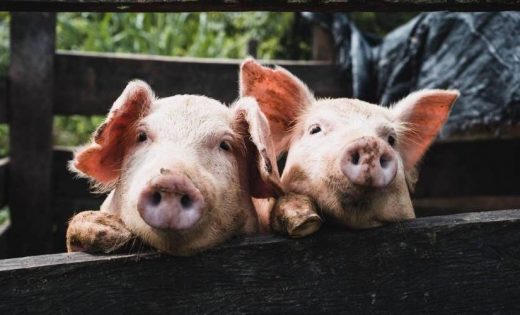Why We Shouldn’t Fear Elon Musk’s Cyber Pig
Why We Shouldn’t Fear Elon Musk’s Cyber Pig

In August of 2020, a curious hashtag started trending that was strange, even by Twitter’s standards: #CyberPig.
This was a sobriquet for Gertrude, a hog serving as the star of the latest eye-popping PR event for Elon Musk’s Neuralink. The display was more reminiscent of a magic show than a PR event. And as the former vice president of innovation and creativity at Disney, she seemed to me like the rabbit in Musk’s hat.
What Makes Gertrude a #CyberPig?
Thanks to a small brain-to-computer implant embedded in her snout, Gertrude wirelessly transmits her brain activity to a nearby computer. She’s proof of the concept that Neuralink will one day allow humans to control digital devices with thoughts.
After the event, a flurry of #CyberPig posts stormed Twitter timelines, with feedback ranging from positive intrigue to end-of-days prophets claiming Musk was bringing us closer to a Terminator-style rise of the machines.
Of course, the feeling has only intensified with Musk’s recent announcement that Neuralink had successfully implanted its chip into a monkey’s brain, allowing it to play video games with its mind. The next experiment? Wire up a second monkey, and see if the pair can play a game of “mind Pong” with one another.
A Robotics Throwback
Wading through all the social media posts on #CyberPig and #MonkeyMindPong, I couldn’t help but be reminded of Hanson Robotics’ famous Sophia robot. Several years ago, I had the pleasure of sharing the stage with Sophia at an event in India. When “she” took the stage, the room lit up with camera flashes and bright smiles as conference attendees scrambled to get a better look at the uncanny machine.
These smiles remained wide as Sophia began her presentation, giving all of us a true glimpse of the future. But something strange happened: Sophia began to lose the crowd. Smiles faded, brows furrowed.
As guests took in the true magnitude of the technology, a sense of fear washed over the room.
It was as if everyone had the same disconcerting thought. Will Sophia replace me?
When Automation Sparks Fear
Fear of being replaced by robots is nothing new. It dates back well over a century to factories of the Industrial Revolution, where eyes widened at the sight of ever-evolving machinery and automation. But with the recent acceleration of artificial intelligence and machine learning, this fear has now spread to white-collar workers as well. In fact, 37% of workers are already worried about losing their jobs due to automation.
For all the excitement about the progress it can bring society, AI triggers an understandable dilemma: How can we celebrate a technology that could replace us?
This dilemma is the same reason Sophia and Musk’s Neuralink are so polarizing. If minds and machines become one — and machines one day outsmart us — will human beings as we know them, cease to exist?
Why the Future Looks Brighter Than We’d Think
This doomsday prophesizing is overblown, however.
As AI becomes more prevalent in the workplace, it will free us to focus on what makes us decidedly more human.
Creativity, imagination, curiosity, intuition — these pieces of us are unique, innovative, and capable of generating new ideas that will assist when we usher in an unprecedented economic boom. In fact, Accenture found that AI could double the GDP in 12 developed economies by 2035. Just imagine what it will do in the decades after when combined with our natural talents.
Once you accept that humans possess traits that are incredibly difficult for machines to replicate, AI’s future grows rosier.
Simply think of all the progress that’s been made by merging humans with machines through medicine: Hearts keep beating thanks to pacemakers and artificial valves. People who have severe hearing loss can hear their parents’ voices for the very first time using cochlear implants. Bionic limbs turn children with disabilities into real-life superheroes. By mixing humans with machines, we’ve vastly improved the duration and quality of life for millions.
What Could AI Do for You?
So imagine that Neuralink’s technology comes to fruition.
You’ll give your brain the power of a computer, allowing you to record important bits of information so they’re never lost, execute complex equations in microseconds, and interact seamlessly with devices.
Likewise, a recent survey of 1,432 CEOs uncovered that the No. 1 barrier to innovation is a lack of time to think. What if a chip-enhanced brain could give you endless time to think? What innovations would you uncover?
Of course, Silicon Valley doesn’t get a free pass — the burden of proof is on founders to prove their solutions are safe and effective. And this won’t happen overnight. After all, seven decades elapsed between the first published mention of an electronic device regulating heartbeats and the first successful pacemaker implantation.
With flesh and bone, we must take our time.
Retain Your Skepticism, but Drop Your Fear; Why We Shouldn’t Fear Elon Musk’s Cyber Pig
We shouldn’t wait forever.
Although many used #CyberPig to say Musk had gone too far, a future where minds meld with machines is all but certain.
That’s OK. We can be skeptical, but we shouldn’t be fearful. These advancements represent an opportunity to refocus our brainpower on the human traits that spark the most progress: creativity, imagination, curiosity, and intuition. By combining the best of what humans and machines have to offer, we’re opening the door to a new era of possibility.
Image Credit: kenneth schippervera; unsplash
The post Why We Shouldn’t Fear Elon Musk’s Cyber Pig appeared first on ReadWrite.
(41)


